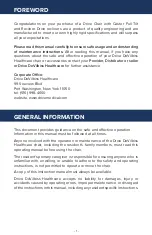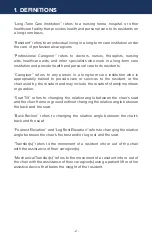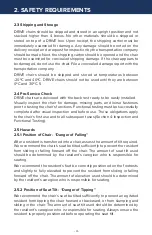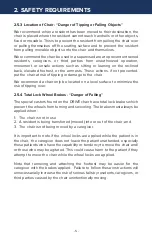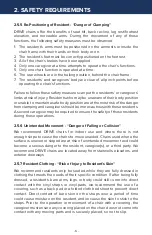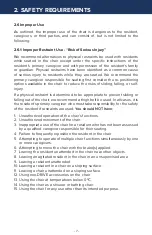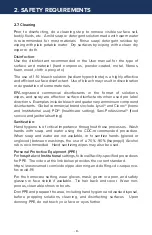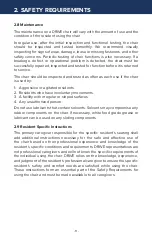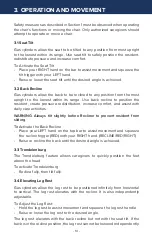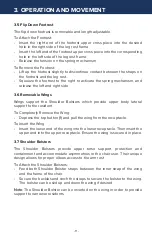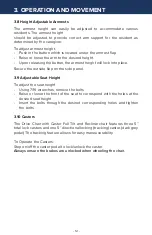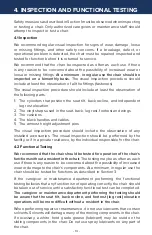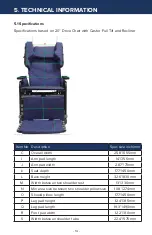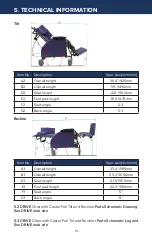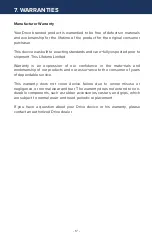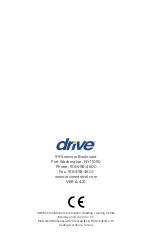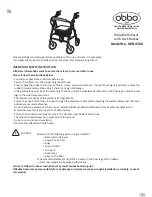
- 10 -
Safety measures as described in Section 1 must be observed when operating
the chair’s functions or moving the chair. Only authorized caregivers should
attempt to operate or move a chair.
3.1 Seat Tilt
G
as cylinders allow the seat to be tilted to any position from most upright
to the lowest within its range. Use seat tilt to safely position the resident,
redistribute pressure and increase comfort.
T
o Activate the Seat Tilt
- Place your RIGHT hand on the bar to assist movement and squeeze the
tilt trigger with your LEFT hand.
- Raise or lower the seat tilt until the desired angle is achieved.
3.2 Back Recline
G
as cylinders allow the back to be reclined to any position from the most
upright to the lowest within its range. Use back recline to position the
resident, create pressure redistribution, increase comfort, and assist with
daily care activities.
WARNING: Always tilt slightly before Recliner to prevent resident from
sliding.
To
Activate the Back Recline
- Place your LEFT hand on the top bar to assist movement and squeeze
the recline trigger (RED) with your RIGHT hand. (RECLINE/RED/RIGHT)
- Raise or recline the back until the desired angle is achieved.
3.3 Trendelenburg
T
he Trendeleburg feature allows caregivers to quickly position the feet
above the head.
T
o activate Trendelenburg
- Recline fully, then tilt fully.
3.4 Elevating Leg Rest
G
as cylinders allow the leg rest to be positioned infinitely from horizontal
to vertical. The leg rest elevates with the recline. It is also independently
adjustable.
T
o Adjust the Leg Rest:
- Hold the leg rest to assist movement and squeeze the leg rest handle.
- Raise or lower the leg rest to the desired angle.
T
he leg rest elevates with the back recline but not with the seat tilt. If the
back is in the recline position, the leg rest cannot be lowered independently.
3. OPERATION AND MOVEMENT



